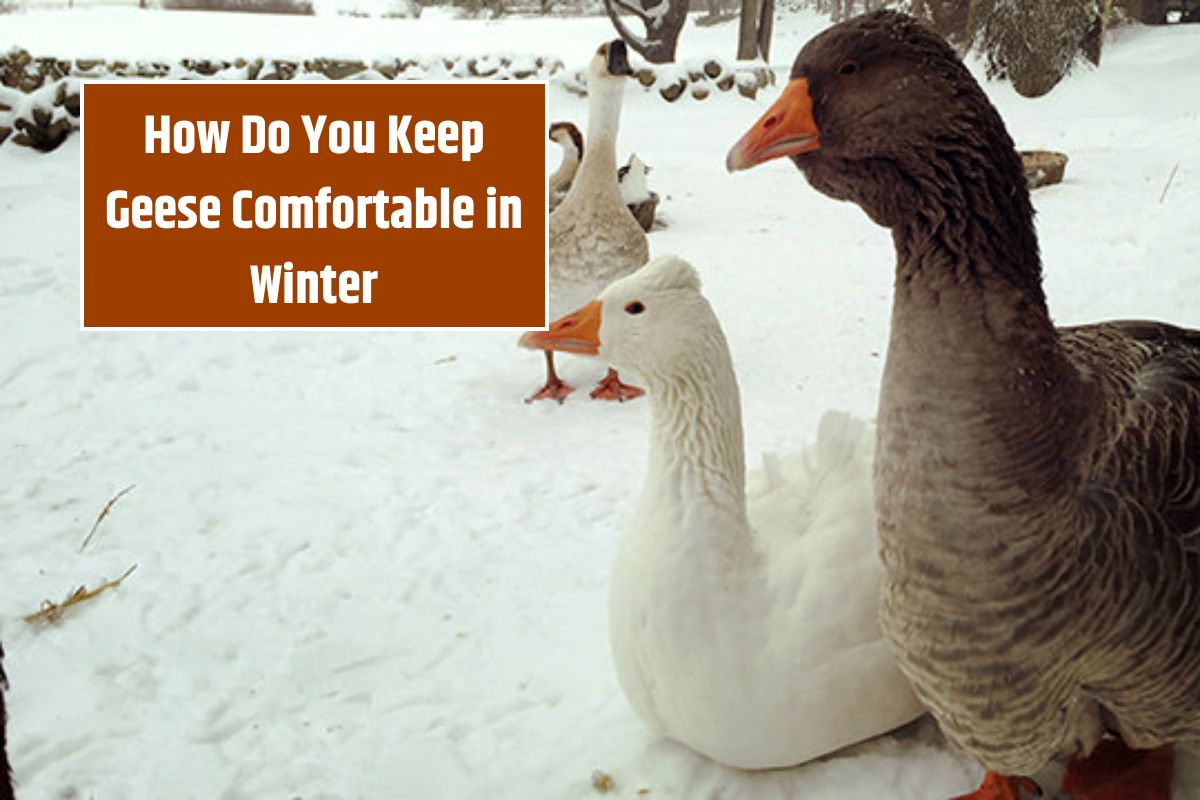Geese are known for their hardy nature and ability to thrive in cool weather, but when winter hits with heavy snow and freezing temperatures, they need some extra care to stay comfortable and healthy. Here’s a complete guide to preparing your geese for winter, covering their housing, feeding, and water needs.
1. Provide a Warm and Dry Shelter
A proper winter coop is essential to keep geese safe from harsh weather. Geese can tolerate the cold, but they need shelter from strong winds, wet conditions, and snowstorms.
Coop Space and Setup:
- Space requirements: Each goose needs at least 8 square feet of space in the coop.
- Separate housing: Geese should ideally have their own coop, not shared with chickens or ducks. During the mating season (starting in February), geese can become territorial and aggressive, which may harm smaller birds.
- Ventilation: Ensure good airflow without creating drafts. Proper ventilation prevents moisture buildup, reducing the risk of frostbite and respiratory issues.
- Bedding: Use a thick base layer of pine shavings for insulation and top it with straw to help them stay warm. Diatomaceous earth can be added to keep the coop clean and dry.
Tip: Clean the bedding thoroughly whenever the weather allows and add fresh straw regularly to maintain warmth.
Heating Options:
- If you’re worried about the coop getting too cold, consider a poultry-specific heater. Avoid using heat lamps, which can pose a fire hazard.
2. Feeding Geese During Winter
Since geese can’t forage for grass during winter, they’ll rely more on their feed. Expect them to consume more food than usual.
Base Feed:
- Use a winter or game bird-specific grain mix or create a balanced feed with essential nutrients.
Boost Nutrition with Mix-ins:
To provide extra energy and variety, mix the following into their feed:
- Cracked corn (for energy)
- Black oil sunflower seeds (for healthy fats and nutrients)
- Oats or wheat (to add variety)
These additions will help maintain body warmth and overall health during cold months.
Leafy Treats and Greens:
Geese naturally enjoy leafy greens, so you can supplement their diet with:
- Lettuce or cabbage heads
- Flakes of hay
- Carrot or beet greens
Avoid: Bread or sugary foods, as these are unhealthy and provide little nutritional value.
Feeding Schedule: In extremely cold weather, free-feed geese up to three times daily. Adjust the amount based on how quickly they eat or if they leave any feed behind.
3. Fresh Water: A Must-Have for Geese
Water is critical for geese year-round, but it becomes more challenging in winter when water sources can freeze. Geese need water to:
- Drink and stay hydrated
- Bathe and keep their feathers in good condition
- Clear their nasal passages
Water Setup:
- Shallow rubber troughs: These are ideal for drinking water because the rubber allows you to easily break and remove ice. Place them near the feed area and refill them several times a day.
- Livestock tanks with heaters: A 15- or 30-gallon tank can be used for bathing water. Use a tank heater to keep the water from freezing. This tank only needs to be refilled once a day.
Tip: Keep water sources outside to avoid messes inside the coop. When water is kept indoors, it can easily spill and freeze, creating slippery, icy conditions. If indoor water is necessary during severe weather, use limited-access waterers to minimize splashing.
4. Managing Geese Behavior in Winter
Winter is also the start of the goose mating season (February), which can cause behavioral changes. Geese may become more aggressive and territorial, so it’s important to:
- Keep their space separate from chickens or ducks to prevent fights.
- Provide adequate coop space to reduce stress and minimize conflicts.
5. Monitor Their Health
Keep an eye on your geese for signs of illness or discomfort during winter. Watch for:
- Weight loss or poor appetite
- Frostbite on combs, feet, or wattles
- Lethargy or difficulty moving
Make sure they are eating well, staying active, and have access to clean water.
With proper preparation, your geese will thrive even in the coldest months. Provide a well-ventilated coop, warm bedding, and the right mix of feed to keep them nourished. Fresh water is critical, so make sure it’s readily available without creating icy messes inside the coop. By following these steps, your geese will stay healthy, happy, and ready to take on the winter.














